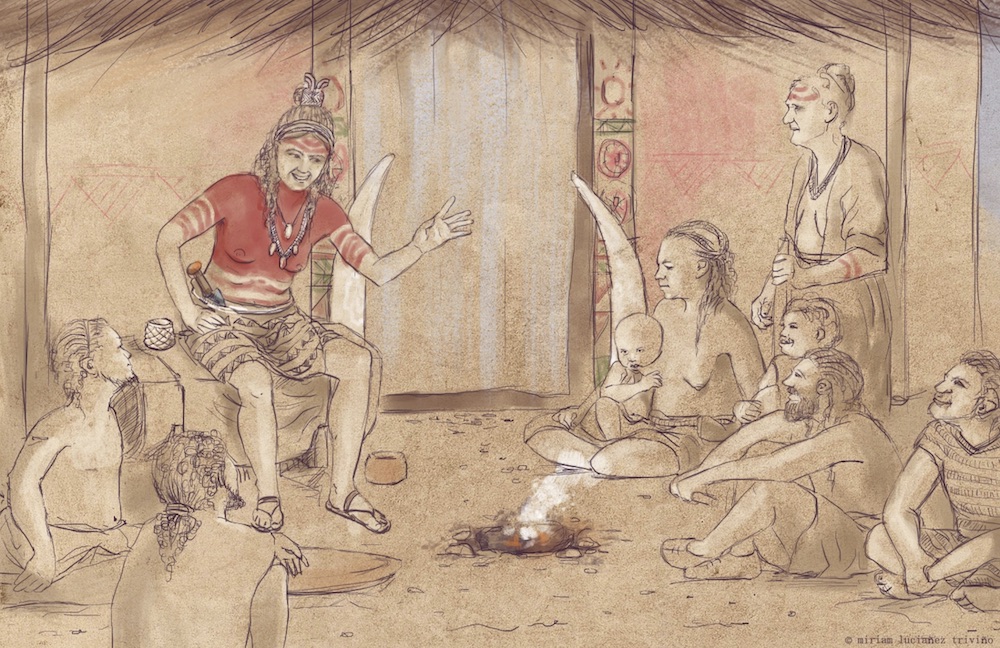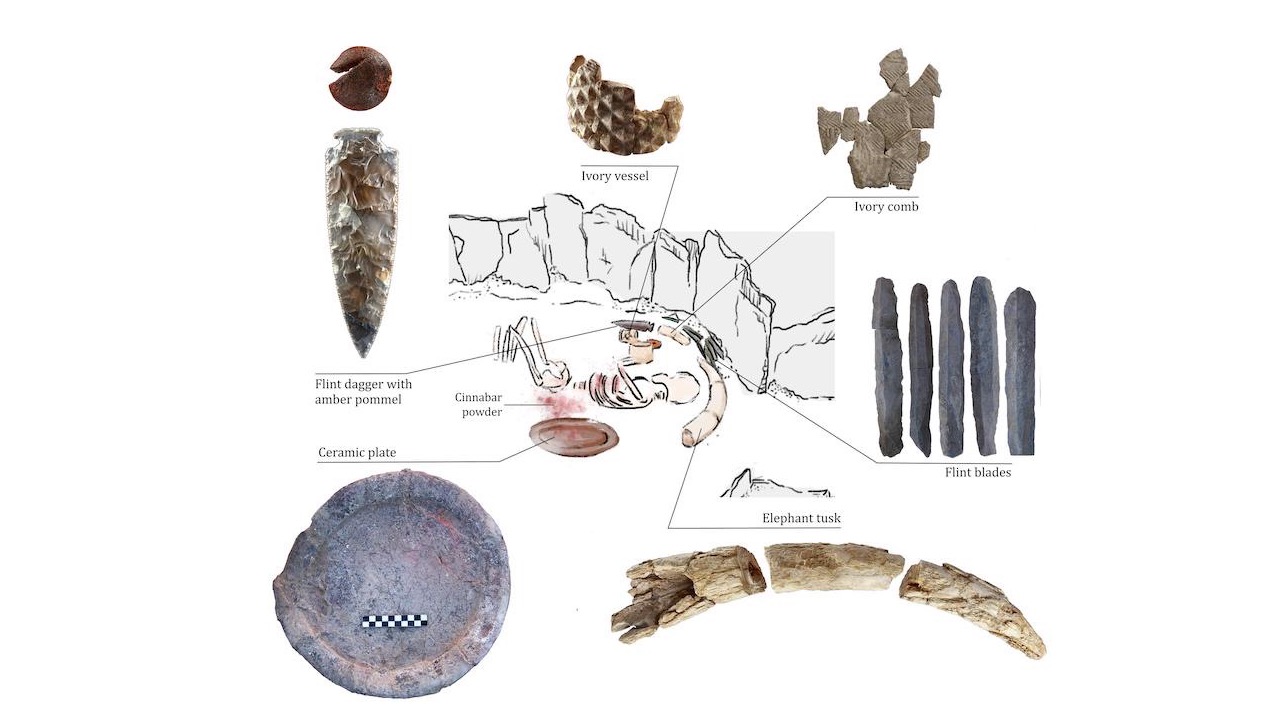Highest-ranking person in Copper Age Spain was a woman, not a man, genetic analysis shows
A new analysis has determined that a Copper Age skeleton discovered in a tomb in Spain was wrongly identified as a man.

Since its discovery in 2008, the skeleton of a high-ranking individual buried inside a tomb in the Iberian Peninsula between 3,200 and 2,200 years ago was thought to be the remains of a man. However, a new analysis reveals that this person was actually a woman.
Archaeologists in Spain dubbed the woman the "Ivory Lady" based on the bounty of grave goods found alongside her skeleton, including an ivory tusk surrounding her skull, flint, an ostrich eggshell, amber and a rock crystal dagger, according to a study published Thursday (July 6) in the journal Scientific Reports.
For more than a decade, archaeologists believed that this individual was a man, even nicknaming him the "Ivory Merchant."
Related: 'Powerful, maybe even frightening' woman with diadem may have ruled Bronze Age Spain
"The first anthropological report determined that the individual was most likely male based on an analysis of the pelvis," study co-author Leonardo García Sanjuán, a professor of prehistory at the University of Seville in Spain, told Live Science.
Because the skeleton's pelvic region wasn't well preserved, this new group of researchers used a different method to analyze the remains: They conducted an amelogenin peptide analysis of the skeleton's tooth enamel to see if it contained the AMELX gene, which is located on the X chromosome (one of the two sex chromosomes found in humans), according to a statement.
They detected AMELX after testing two of the teeth. "This analysis told us precisely that the skeleton was female," García Sanjuán said.
Get the world’s most fascinating discoveries delivered straight to your inbox.
While not much is known about who this woman was, the archaeologists think that at one time, she was the "highest-ranked person" in this particular society, García Sanjuán said.
"During this time period, we were starting to see new forms of leadership in Western European societies," he said. "She was a leader who existed before kings and queens, and her status wasn't inherited, meaning that she was a leader based on her personal achievements, skills and personality."
Her tomb is a rare example of a single-occupancy burial in this region, which provides further evidence of her high status during the Iberian Copper Age (2900 B.C. to 2650 B.C.).
"The burial is special because it contains only one individual and isn't a [mass grave] with commingled bones," he said. "When we compared the grave goods with our database [of more than 2,000 grave sites in the area], we can clearly see that this woman stood head and shoulders above other individuals in terms of wealth and social status."
For instance, a nearby lavish Copper Age tomb holds the remains of at least 15 women; this grave may have been constructed to hold individuals who claimed descent from the Ivory Lady, the researchers said.
Other burials in southern Spain, particularly of infants interred without grave goods, further reveals that during the Copper Age birthright didn't determine social status. The location of her tomb also provides insight into the ancient society that once resided there, according to the study.
"In the last 15 years we've come to learn that this site was important and was the largest civilization site in Iberia," he said. "We think that this was a central gathering place that connected people from afar. It makes full sense that the Ivory Lady would be buried here."
This isn't the first time archaeologists have assigned a skeleton the wrong biological sex.
"There have been other instances in which buried individuals were classified as male or female based on the assumptions of certain grave goods being given to men and women," he said. "This is a poor scientific practice and a cautionary tale."
Jennifer Nalewicki is former Live Science staff writer and Salt Lake City-based journalist whose work has been featured in The New York Times, Smithsonian Magazine, Scientific American, Popular Mechanics and more. She covers several science topics from planet Earth to paleontology and archaeology to health and culture. Prior to freelancing, Jennifer held an Editor role at Time Inc. Jennifer has a bachelor's degree in Journalism from The University of Texas at Austin.




